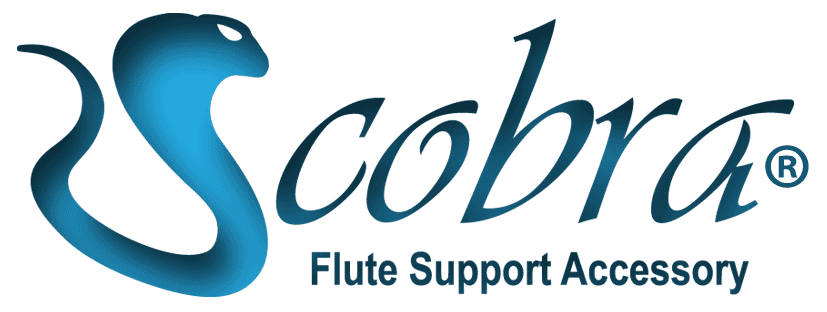Benefits of Using the COBRA
The COBRA supports the flute, making it easier to hold while playing and ensuring that it does not slip. The COBRA provides excellent support when playing notes where the left thumb is not playing a key. It is especially helpful in playing trills.
Basic Technique
First, the COBRA must be adjusted to fit comfortably on the left forefinger.
Now, hold the flute with the right hand and rest it on the COBRA without using the left thumb for support.
Play the flute normally. Soon, however, the finger that is wearing the COBRA will feel pressure, and may start to hurt. This is because the COBRA ring is too tight. Loosen the COBRA ring to a point that feels loose, but is still able to support the flute. You may have to try several times to find the optimal adjustment. If the ring is too loose the flute will not feel secure. If it is too tight, your finger will hurt.
While getting used to playing with the COBRA, it is advised to take a break whenever the finger feels pain. It may take a few practice sessions to adapt to using the COBRA.
For some people the finger will quickly adjust and no longer feel pain. For others, who are more sensitive, it may take more time to get used to wearing the COBRA. However, if the pain continues after several days of playing, the COBRA ring should be opened some more. If the maximum opening of the ring is reached that still holds the flute securely, and the finger is still painful, please exchange the COBRA for a larger size.
Techniques for Advanced Flute Players
Although advanced flute players have no problem holding the flute securely, they can still benefit greatly from using the COBRA. In this case, the focus is not so much on stability (although that is also a benefit) but on playing pieces with difficult fingering and on improved tone control.
Difficult fingering
If the piece is easy enough to play without any problem to hold the flute securely, the flute should continue to be held without resting it on the COBRA. Only when the music has difficult fingering or includes notes that are hard to play, such as the second octave C sharp, then the flute should rest on the COBRA for support.
The more difficult the passage the more the COBRA should be used for support. But whenever the fingering is less demanding the flute should be held without the support of the COBRA, just touching it in order to prepared for the next difficult passage. This method reduces the pressure on the finger, even during playing, with the result that the finger will not be painful and it will be possible to keep playing for long periods.
Tone control
When using the COBRA the flute is securely supported even during passages with difficult fingering. Without the COBRA, it is common to use the lips pressed against the lip plate to stabilize the flute for such difficult pieces. This reduces the ability to have subtle control over the tone and play with a light touch.
When the flute is stable resting on the COBRA, the lips are not pressed the lip plate and so more delicate tone control is possible. With practice using the COBRA, you will be surprised at much variety of tone you will be able to produce in the most difficult musical pieces.
